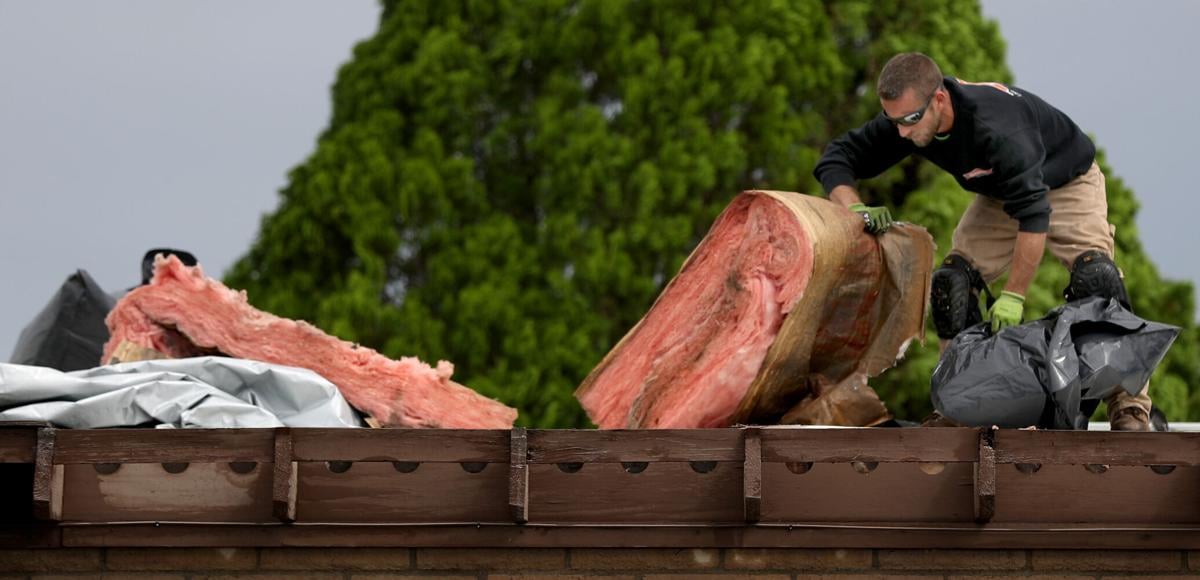Question: I am new to desert living. What do I need to know about keeping my roof in good shape?
Answer: As with everything else in the desert, our roofs take a constant beating from the sun, wind and sudden downpours. They are very often neglected. It is critical to maintain them to ensure that small items don’t become big and expensive issues.
“We just had the opportunity to help a lady repair her house,” says Tyler Johnson, Johnson Roofing, a Rosie on the House certified partner. “It was all due to a flashing that was installed incorrectly when the house was built.”
Over the years, the improperly installed flashing allowed water to get under the tile in amounts that caused the underlayment to deteriorate at a much faster pace, thus shortening the expected lifespan of the roof.
“Once the water is under the tile, it has to go somewhere, and it always goes down,” says Johnson. “Most of the time that is good because it goes to the end of the roof and falls off, and everyone is happy.”
However, he cautions that if it is under the tile and it goes down the underlayment, at some point, the underlayment can’t handle it and damages the inside. Fortunately, in this case, it was caught early and caused very little damage on the inside of the house. “Having one piece of flashing not properly bent caused over $1,000 worth of roof damage,” says Johnson. “And even though it was caught early, there is still damage on the inside of the house.”
Q: What are the most important aspects of roof maintenance?
A: The key to a properly functioning roof is to not ignore it. As with your car, regular maintenance is key to making sure that it lasts at least as long as it was designed to. A well-maintained roof will often outlast its expected longevity by many years.
There are two key aspects to maintaining the health of a roof:
1. Regular Maintenance — This should be done by a professional roofer licensed by the Arizona Registrar of Contractors on a regularly scheduled interval as determined by you and your contractor. Most reputable roofers should have a maintenance program that includes removing debris from the roof, replacing damaged items and inspecting and maintaining flashing. Another important fact to remember is that while the tile or shingles may have a 20-year or more life expectancy, there are components that may not, such as sealants around penetrations. These must be redone periodically to prevent leaks.
2. Watch Your Roof — Keep an eye on what your roof might be telling you. You may have had your roof maintained just to see a tree branch fall and break some roof tile the next week. This should be taken care of as soon as possible. Some of the most common evidence that you need someone out as soon as possible are:
Curling shingles and curling ridge caps
Broken or missing roof tiles
Missing shingles or shingles that are blown up
Leaks inside the home
Water draining off the house for hours or days after the rain stops
Q: What do I do when I have a roof leak and a contractor cannot get to me right away?
A: It’s no secret that the availability of materials and labor has been challenging. Your roof repair is an emergency. However, you may have to wait for help.
Countless homeowners may be calling a professional right after a major weather event. Because of Hurricane Ian, the roofers in Florida are scheduling appointments three months from now. It is always good to have the phone number of your roofer when a major storm causes your house to require immediate attention.
So, what happens if you find a leak or a hole in the roof and a professional roofing contractor can’t get to you for a few weeks? First, don’t let desperation force you into making a poor decision. Do not hire a “jack-of-all-trades” who says, “I can fix it” (a la Jeff Spicoli). Just get on the contractor’s schedule and be patient. If rain is in the forecast, cover the area(s) with a sturdy tarp.
Tarping a roof is not for the faint of heart, nor is it a one-person job. Safety always comes first.
Tarping could be a DIY job only if you are skilled at climbing a ladder and working on a roof. Check out our “how-to” tarping videos at rosieonthehouse.com/videos. Otherwise, a handyman can cover problem areas with tarps. Be sure the handyman carries their own liability insurance policy. Accidents can happen even to a professional.





